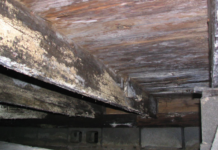Source: Freepik.com
Having clean, safe drinking water is important for any household. With municipal water containing varying levels of contaminants, many homeowners rely on water filtration systems. However, with different filter types available, it can be hard to determine the right solution. This guide compares reverse osmosis systems to other popular options to help you choose the best home water filter.
Activated Carbon Filters
Activated carbon filters are one of the most common and affordable water treatment methods. They work by passing water through activated carbon granules that trap substances like chlorine and organic compounds. While effective for common contaminants, carbon filters don’t remove many minerals or reverse osmosis system-level pollutants. They must be replaced every 6-12 months for best performance.
Ceramic Filters
Similar to carbon filters, ceramic filters make use of a fine porous substance – ceramic rather than carbon – to physically trap particles as small as 1 micron. Ceramic filters are even better at removing toxins and giardia/Cryptosporidium. However, they don’t address issues like heavy metals, fluoride, or hardness minerals that require chemical processes. Additionally, ceramic filters need more frequent replacement than carbon.
Water Softening Systems
If hard water with high mineral content plagues your home, a water-softening system may help. Through an ion exchange process, they remove calcium and magnesium that cause scale buildup. This counters issues like poor cleaning and damaged appliances. While they “soften” tap water, these systems don’t remove other toxins. However, on the other hand, a reverse osmosis system targets toxins more comprehensively.
Distillation
Distillation boils water to collect only purified steam, leaving behind all contaminants. It’s highly effective but also energy-intensive. Distillation can remove toxins, heavy metals, and total dissolved solids. However, the process strips beneficial minerals too, and requires periodic maintenance. Distillers tend to be slower than other options as well.
Reverse Osmosis (RO) Systems
Considered the gold standard, reverse osmosis systems use a semi-permeable membrane to filter out dissolved solids like heavy metals, fluoride, nitrates, and up to 99% of total dissolved solids. RO is the best choice when quality is the priority concern over other issues like initial costs, maintenance needs, or waste production. RO produces the cleanest, safest home drinking water at the expense of more wastewater and higher purchase/upkeep expenses than other methods.
Which is best?
For most homes, activated carbon or ceramic filters are perfectly fine for general contaminant control with lower hassle. However, if your water shows concerning pollutant or mineral levels, reverse osmosis produces the highest quality results. RO is worth investing in when purity matters most for health issues, infants/elderly, or stringent appliance/application needs – just be prepared for the higher costs of purchase, installation, and filter replacement for the reverse osmosis system over time compared to other options.
Conclusion
With so many water filter options, it’s wise to consider your home’s specific water concerns and lifestyle needs. Basic options adequately serve many. But a reverse osmosis system offers the absolute highest level of contaminant removal and protection if you desire the cleanest possible drinking and cooking water. Just be aware of their higher price point. By weighing the factors discussed, you can determine which water treatment technique is best for your family and household.









